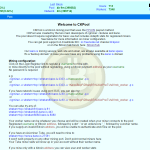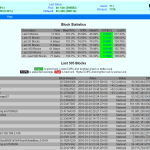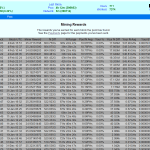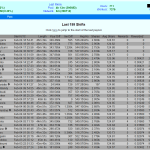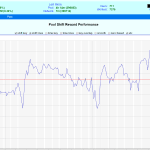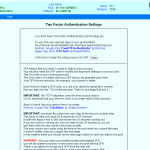May 2018 update – Kano/CKPool continues to stay alive, although in the two years since this article has invested nothing in it’s UI. Due to the rising difficulty rate, and the way that this pool treats small balances (ie it doesn’t pay out), it is not recommended in any way if you are mining on older ASIC hardware (less than several terrahash), GPU’s or CPU’s as your mining earnings will not be credited!
A look at Kano.is / CKPool Mining Pool (originally published February 2016)
Please note: This review is based on a relatively small amount of hashing, a few hundred ghs. The stats outlined in this review may not apply to larger miners. We hacked our antminer S1’s to mine nine pools concurrently, letting us run proportional power across a wide variety of mining pools. This review is part of our series of bitcoin mining pool reviews.
CK Pool, also known as Kano.is pool is a bitcoin mining pool co-created by the developer of CGMiner, the software behind many bitcoin mining softwares, and hardware. Our own review rig uses it to connect to the pools we test with here. At time of publication, it has a small percentage of the overall network, mining a couple of blocks a day.
The mining pool has a rather poor interface, but nonetheless has been able to capture a varying amount of mining power (fluctuating between 9 and 20 petahashes over a few weeks prior to this review).
Kano offers two types of ways to connect. Firstly, they operate a solo pool, where you can point your miner to it, and if you are lucky to find a block, get all of the block reward, less a 0.5% fee. However, for our review, we will be looking at the pool which operates a Pay Per Last N Share (PPLNS) model. They only mine bitcoin, with no merged mining.
What is starkly obvious about the pool is it’s poor user interface. The pool functions, but the UI leaves a huge amount to be desired, to the point of frustrating. Your account will time out after a few minutes, meaning that I had to regularly re-log in. The screens are simple to the point of ridiculous in 2016, with really basic graphics. Everything is static, so there is no updates in the screen in any of the interfaces. Also, it is very difficult to use the earning screens, given that most of them just point you to a wallet address, and tell you to find the transaction you got paid in by manually searching for your bitcoin wallet address. Compared to other (older) pools, this is rather disappointing to see.
That being said, the pool itself operates using a PPLNS system and a 0.9% fee, and at time of writing uses a multiple of five times bitcoin difficulty when calculating it’s rounds. It will pay a rate each time a block is found of 1/5 the value, and these are spread across shifts that last ~45-50 minutes, or when a block is found. The pool also shows an effective PPS rate, with 5 blocks found in a reward period being 100%, and this will fluctuate depending on how many blocks are found in the time. Once blocks mature after 120 confirmations, the reward is sent to your wallet.
On this, finding out the rewards is pretty annoying when compared to other pools. Rewards aren’t distributed from the coinbase like with the likes of Eligius, and there is no payout threshold, meaning lots of small payments, and no option to let it build up. Also, if your hashing power is too low, and your rewards per block are less than 0.0001 bitcoin, you will not get paid. I read that only once have they paid out this, so it’s a real disincentive if you are running minor amounts of bitcoin hashing power. Given what I said before about you being unable to set a payout threshold, this means you’ll just be wasting your hashing power. But even with 500ghs running there, we were getting well over that, so it’s only a case for really old or low hashing hardware.
Aside from poor statistics and interface, the pool does have 2FA for securing your account, but really other than that there isn’t much to this pool than that. No bells and whistles, just set up your account, and start mining with your worker, or point your bitcoin address to their mining address with a bitcoin address to mine anonymously. Given that the pool is developed by one of the people who has allowed bitcoin mining to flourish, you’d think the mining pool would have a more user friendly UI, but nonetheless the pool is solidly ticking away with a loyal group of miners, and getting a couple of blocks a day on average.
So in conclusion, CK Pool / Kano functions perfectly from the back end, but the front end leaves a lot to be desired. However, what they lack in looks, they more than make up with regular uninterrupted payouts. If you’re a very small scale miner, steer clear, but otherwise they’re there for people to try out who want to work using their PPLNS model, which is competitive against PPS mining pools, with a lower fee.


